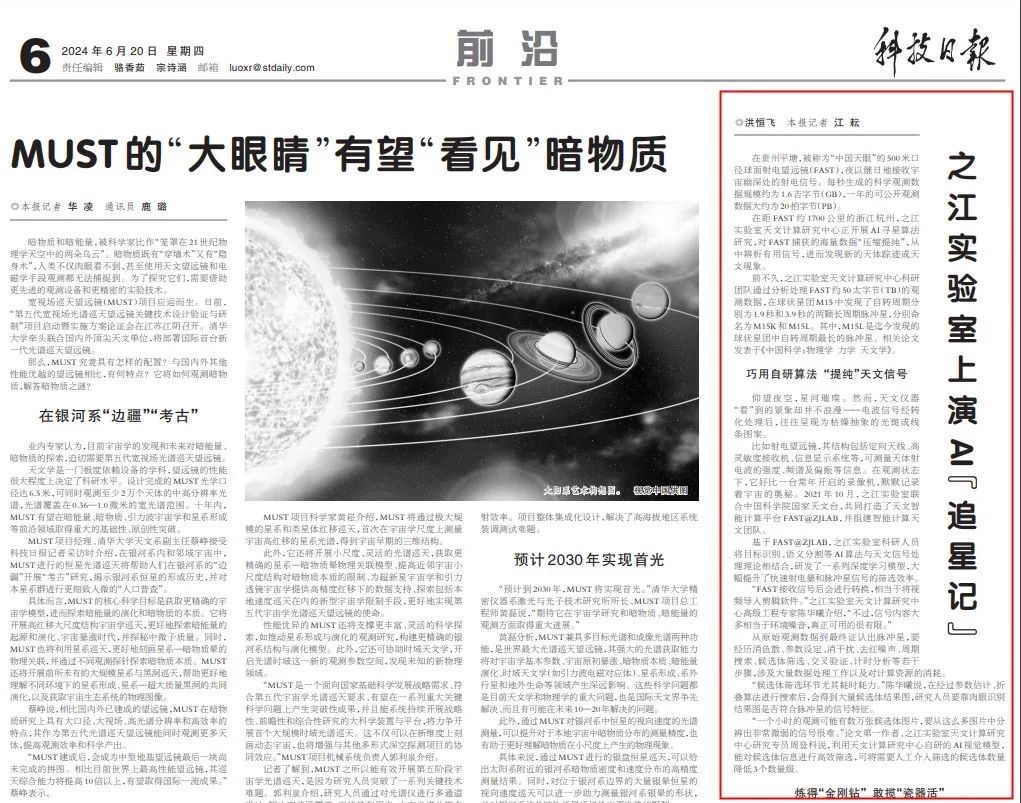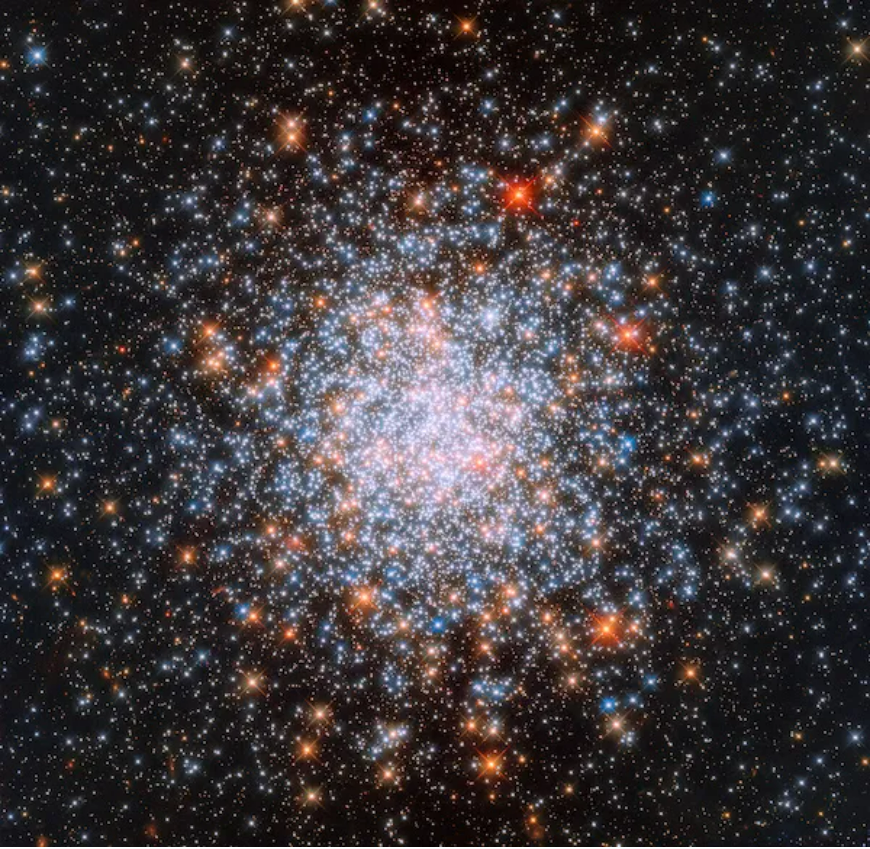

Located in Pingtang, Guizhou Province, the Five-hundred-meter Aperture Spherical Radio Telescope (FAST), also known as "China's Sky Eye", continuously receives radio signals from the depths of the universe. It generates about 1.6 GB of scientific observation data per second, providing about 20 PB of publicly available observation data each year.

In Hangzhou, Zhejiang Province—about 1,700 km away from FAST—the Research Center for Astronomical Computing of Zhejiang Lab (ZJ Lab) is carrying out research on AI star search algorithms. Through the compression and refinement of massive data captured by FAST, the algorithm can discriminate useful signals from these data to discover new celestial traces or astronomical phenomena.
Recently, by analyzing and processing about 50 TB of observation data from FAST, the research team of ZJ Lab's Research Center for Astronomical Computing discovered two long-period pulsars in the globular cluster M15, namely M15K with a spin period of 1.9 seconds and M15L with a spin period of 3.9 seconds. M15L is the current longest-known pulsar in globular clusters. The study was published in SCIENCE CHINA Physics, Mechanics & Astronomy.
Refinement of astronomical signals with our self-developed algorithm
To the casual observer, the night sky is filled with brightly-shining stars. However, when viewed through astronomical instruments, this scene is not romantic: after conversion, radio signals often appear as boring and abstract spots or line patterns.
For example, a radio telescope typically consists of a directional antenna, a highly sensitive receiver, an information display system and so on, which can be used to measure the intensity, spectrum and polarization of celestial radio waves. In the observation state, it is much like a video recorder that runs year-round, silently observing the mysteries of the universe. In October 2021, ZJ Lab and the National Astronomical Observatories of the Chinese Academy of Sciences jointly built the astronomical intelligent computing platform FAST@ZJLAB, and established an astronomical intelligent computing team.
Based on FAST@ZJLAB, ZJ Lab's researchers have developed a series of deep learning models by combining AI algorithms such as target recognition and semantic segmentation with astronomical signal processing theories, significantly improving the screening efficiency of fast radio bursts and pulsar signals.
CHEN Huaxi, a senior engineering expert at ZJ Lab's Research Center for Astronomical Computing, said: "After receiving signals, FAST will perform conversion, which is equivalent to importing videos into editing software. However, most of the signal content is equivalent to environmental noise, while there is very little usable content."
From the original observations to the final identification of pulsars, several steps must be performed, including de-dispersion, parameter setting, interference elimination, red noise removal, periodic search, candidate selection, cross validation, and timing analysis, which involve extensive data processing and consume significant computing resources.
CHEN Huaxi continued, "The candidate selection step is particularly time-consuming and labor-intensive." Since massive candidate graphs are generated from searches by parameter estimation and FFA, researchers have to visually determine if the graphs conform to pulsar signal characteristics.
"Given that tens of thousands of candidate images are probably generated in just one hour of observation, it is very difficult to distinguish very weak signals from so many images," said ZHOU Dengke, the first author of the paper and a senior research specialist at ZJ Lab's Research Center for Astronomical Computing. However, by leveraging the AI vision model developed by the Research Center for Astronomical Computing, the candidate information can be filtered efficiently, and the number of candidates to be filtered with manual intervention can also be reduced by three orders of magnitude.

A skilled craftsman can take on the most delicate task
Pulsars, i.e. fast-rotating neutron stars, emit energy in the form of electromagnetic beams along the magnetic axis. Pulsars have many distinctive traits, and scientists are attempting to use them as cosmic probes to detect the distribution and density of interstellar medium, as well as the distribution and intensity of magnetic fields in the Milky Way, so as to gradually build a "cosmic navigation system".
Over the past year, based on FAST observation data, the Research Center for Astronomical Computing has discovered a total of 31 pulsars, including 15 long-period ones.
The Research Center for Astronomical Computing has about 120 researchers, with about 30 engaged in astronomy and 90 in computing.
This research team is highly skilled and experienced, and prepared to take on the most challenging tasks. The team once processed about 172 TB of data in just 170 hours, equivalent to skimming through 1,024 films with a capacity of 1 GB per hour.
CHEN Huaxi also explained, "If we liken an open-source algorithm like Presto to a gardening hoe, then our AI algorithm is equivalent to a large-scale mechanized tool." The two are complementary, rather than one replacing the other. Developing more algorithms will benefit integrated data processing and lead to more astronomical discoveries.
ZHOU Dengke said that it is very time-consuming to process astronomical data due to their huge volume. Utilizing intelligent computing technologies such as AI algorithms to assist in data processing can alleviate the burden of heavy data analytics workload, enabling researchers to dedicate more energy to understanding the physical images behind the data. This greatly enhances the efficiency of scientific research.











